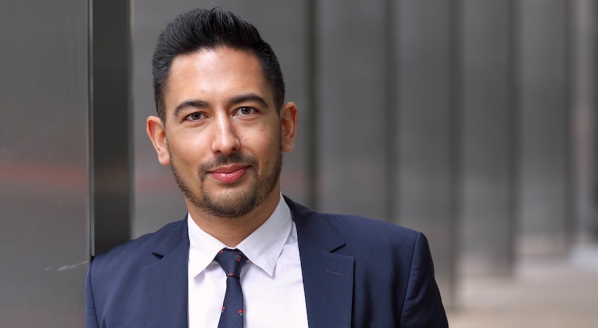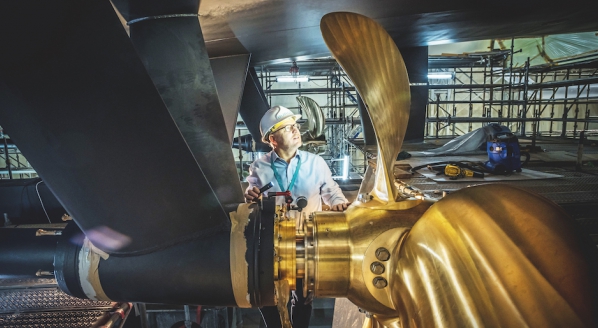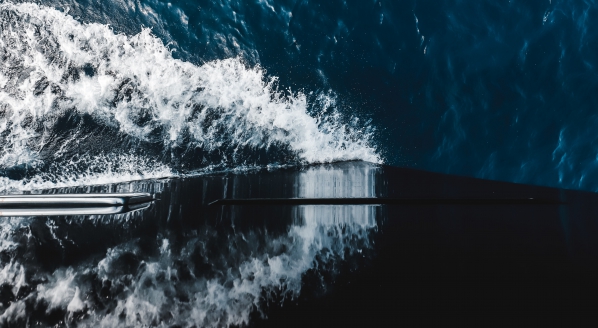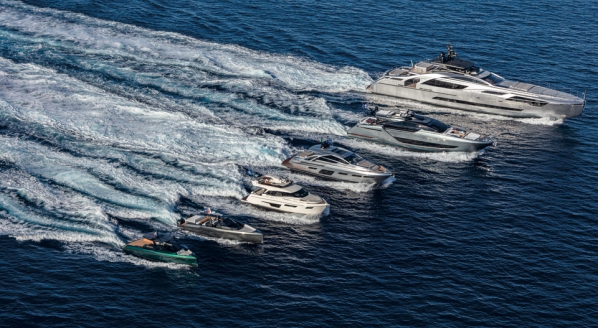Efficiency, quality and sustainability
Remy Millott, CEO of GYG, outlines the three pillars he believes will drive the coatings sector forwards…
As we look to the future of the paint application industry, I believe the three words that comprise the title of this piece will be the main drivers behind the ‘next big thing’. It often helps to revisit the past when looking for inspiration, and I am proud to say that Pinmar has played a key role in recent years in driving the adoption of the latest technologies and application methods within the industry.
Pinmar has painted hundreds of the world’s finest yachts and is increasingly involved in fairing and finishing some of the largest and most impressive new-builds in the industry’s leading yards.
The size and complexity of new superyachts continues to increase; in 2010 the average length of a Pinmar project was 54 metres, today it is close to 80 metres. This presents new challenges for paint applicators, especially with respect to time and quality.
Our pioneering of the adoption of electrostatic paint spraying for superyachts, a technology initially developed within the automobile industry, is a case in point. Electrostatic application offers significant advantages over conventional paint spraying, not least being able to reduce the time required to top-coat larger superyachts as well as a 60 per cent improvement in paint-transfer efficiency, which massively reduces the environmental impact of overspray.
While the average length (and therefore the exterior surface area) of superyachts has increased significantly, the timescale of a typical refit period has not – on a pro-rata basis. This requires paint applicators to cover a significantly larger paint area during the same number of weeks without compromising on quality. Electrostatic paint application has allowed us to do just that, matching the quality of a conventional approach and, in most cases, providing a better finish.
As with the introduction of any new technology or process, we have had to work hard with the paint manufacturers, equipment manufacturers, consultants and inspectors to reassure the market that this approach was the most effective. Today, over 90 per cent of Pinmar paint projects use the electrostatic application method as standard.
More recently, I am genuinely excited by the trial project we are completing in Germany, working with and understanding the benefits of the application of Awlgrip’s remarkable new sprayable filler product (Awlfair SF) in partnership with AkzoNobel and Wrede Consulting.
Currently, our fairing process has an artisanal approach. It is very labour-intensive and based on highly-skilled individuals using techniques handed down from painter to painter. The process hasn’t really been modernised in any significant way for a long time. We understand that we have to move with the times, and rather than waiting for others to take the lead, we have made it our mission to go out, invest and affect change.
The application of Awlfair SF is distinct compared to current methods in that it is applied using a pressurised airless spray rather than by hand. This technology allows for wet-on-wet applications enabling up to two filler applications per day without the need for sanding inbetween coats. Furthermore, the spray application ensures perfect mixing of the components, all but eliminates air pockets (which can cause cracks in the filler system), reduces multiple sanding periods and, in turn, reduces the number of painters required to fill and fair a yacht. This results in a reduction in schedule, improved aesthetics and a higher-quality end product overall.
We are nearing completion of our trial project using the Awlgrip SF filler system and the results have already demonstrated to us that this new technology will offer a step change in both the time and quality of fairing for large new-build projects.
So, what does the future hold? It is clear from these examples that innovation takes time, with many months of research and development required from several parties to introduce a ground-breaking technology to market. As with the electrostatic breakthrough, we continue to follow other application sectors, such as the automobile and aerospace markets, with interest, looking for innovative and game-changing solutions that could transfer to the marine industry.
But, with such a focus recently on sustainability and the environment (and rightly so), I do wonder if the next technological leap won’t be driven by the yacht owners themselves.
With high-profile projects such as REV Ocean and OceanXplorer at the cutting edge of marine research and exploration, we have already seen a trickle-down effect, with recent new-builds utilising hybrid propulsion systems and sustainable materials, and I don’t believe it will be long before environmentally conscious owners take more of an interest in eco-friendly paint solutions. As always, we want to be at the forefront of technology, and we will embrace any positive changes that this may bring to the application industry.
Profile links
NEW: Sign up for SuperyachtNewsweek!
Get the latest weekly news, in-depth reports, intelligence, and strategic insights, delivered directly from The Superyacht Group's editors and market analysts.
Stay at the forefront of the superyacht industry with SuperyachtNewsweek
Click here to become part of The Superyacht Group community, and join us in our mission to make this industry accessible to all, and prosperous for the long-term. We are offering access to the superyacht industry’s most comprehensive and longstanding archive of business-critical information, as well as a comprehensive, real-time superyacht fleet database, for just £10 per month, because we are One Industry with One Mission. Sign up here.
Related news

COVID as a catalyst for change
Hannaford Turner's Adam Ramlugon explores how the new build market may change as a result of COVID-19
Owner

Innovation, sustainability and our social licence to operate
She of the Sea founder Jenny Matthews explains how yachting can avoid the stick and enjoy the carrot
Technology

Burgess reports strong new-build performance
New business remains strong, with demand characterised by sustainability and experiences rather than size alone
Business

IMSA launches remote cyber security assessments
The remote cyber vulnerability scanning capabilities aim to support vessels with IMO cyber security compliance
Technology

Superyacht paint: in the eye of the beholder
CCS technical manager Colin Mason discusses how the yacht painting process has evolved
Technology

Ferretti Group publishes its first sustainability report
Ferretti Group has formalised its dedication to corporate social responsibility and sustainability
Business
Related news
COVID as a catalyst for change
5 years ago
Burgess reports strong new-build performance
5 years ago
IMSA launches remote cyber security assessments
5 years ago
Superyacht paint: in the eye of the beholder
5 years ago
NEW: Sign up for
SuperyachtNewsweek!
Get the latest weekly news, in-depth reports, intelligence, and strategic insights, delivered directly from The Superyacht Group's editors and market analysts.
Stay at the forefront of the superyacht industry with SuperyachtNewsweek




